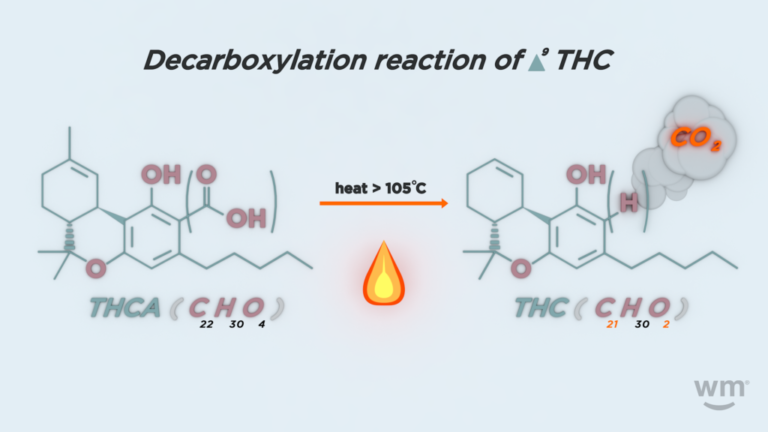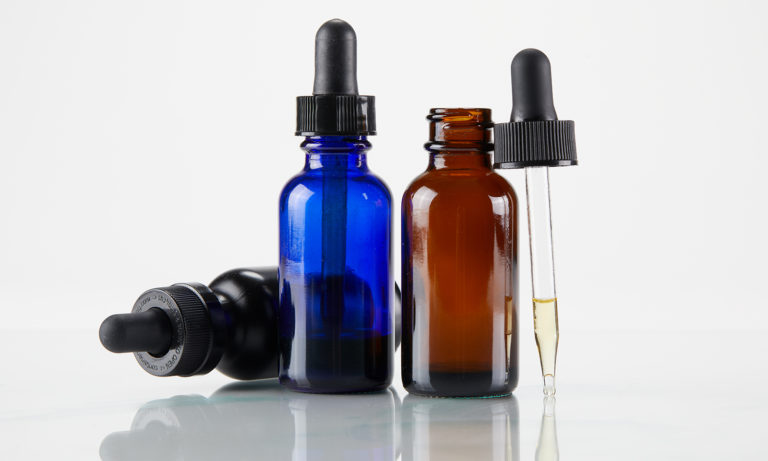CBD has received significant press for its potential pain and stress-relieving benefits, but have you heard of CBDa? If you're not familiar with the term, you may have some questions about this lesser-known component of the hemp plant and cannabis plant.
What exactly is CBDa and how does it function? What are the benefits of CBDa? What is the difference between CBD and CBDa? Here we shine the spotlight on CBDa while breaking down how it differs from CBD, one of the most abundant naturally occurring cannabinoids present in cannabis.
What is CBDa?
CBDa, or cannabidiolic acid, is a compound that occurs abundantly in live hemp and cannabis plants. Like CBD, CBDa interacts with our bodies and endocannabinoid systems as a cannabinoid and may offer health benefits ranging from pain relief to mood enhancement.
CBDa is the acid form of CBD and bears the same relationship as THCa and THC. Dr. Adie Poe, assistant scientist at Legacy Research Institute in Portland, Oregon, and scientific advisor to Weedmaps, elaborated: "The plant makes the acid form, and the acid form is decarboxylated by heat. CBDa is just the “raw” or unheated form of CBD."

Image lightbox

In other words, when CBDa heats up, it turns into CBD. In its original form, CBDa stays as is. Since CBDa has a close relationship with CBD, does one cannabinoid have more benefits than the other? Some CBDa research indicates yes.
Is CBDa better than CBD?
If your definition of better means more potent, then yes, CBDa could be superior to CBD. Sometimes dubbed the mother of all cannabinoids, CBDa has acted more potently than CBD as well as THCa in different scientific studies on animals.
But Poe cautioned against making premature assumptions about what CBDa can do for people. As she pointed out, "There is sparse evidence about CBDa's medical benefits in humans, although a few studies have looked at its ability to reduce seizures, reduce tumors, and treat inflammation in animals."
One such study was conducted by Japanese researchers and published in 2008 in the journal Drug Metabolism and Disposition. In this study, both CBDa and THCa were found to have an inhibitory effect on inflammation, but CBDa emerged as the stronger of the two.
 Photo by: Gina Coleman/Weedmaps
Photo by: Gina Coleman/WeedmapsImage lightbox

Another study, conducted by the same Japanese researchers and published in 2017 in the Journal of Natural Medicine, demonstrated the potential anti-tumor properties of CBDa. This study discussed the possibility that CBDa could combat the development of highly aggressive breast cancer cells.
With regard to nausea, a 2013 study published in the British Journal of Pharmacology evaluated the ability of CBDa to reduce nausea and vomiting in animal models. Results revealed that CBDa reduced toxin- and motion-induced vomiting while acting more potently than CBD. Researchers noted, "Consequently, CBDa shows promise as a treatment for nausea and vomiting, including anticipatory nausea for which no specific therapy is currently available."
Clearly, CBDa has demonstrated beneficial properties in animals, but whether these studies have implications on human health remains to be seen.
What is CBDa used for?
One way the possible benefits of CBDa can be experienced is in homemade food and beverages. Poe shared, "CBDa is an important component of a full-spectrum raw extract. Hemp kief in your smoothie equals a nice anti-inflammatory micronutrient."
A CBDa-infused smoothie might also contain superfoods such as kale, spinach, and ginger root. A handful of CBDa flower along with a teaspoon of CBD oil, plus some apples for taste and orange juice for texture could complete the recipe. This type of smoothie won't get you high because THC is not an ingredient, but the drink could help fight off inflammation in the body and leave you feeling refreshed.
Is CBDa in CBD oil?
CBD and CBDa may both be present in oil depending on how the concoction was prepared. If CBDa is an ingredient in raw, unheated forms, then it could be an active ingredient in a therapeutic oil.
 Photo by: Gina Coleman/Weedmaps
Photo by: Gina Coleman/WeedmapsImage lightbox

Dr. Poe elaborated, "A consumer may encounter CBDa products out there in the world if the manufacturer has not heated the plant prior to processing. That is, if they take raw hemp oil and incorporate it into their products without heating, the “CBD” oil may actually contain CBDa. CBDa is anti-inflammatory, but it has other targets in the nervous system (serotonin signaling, for example), just like its de-carbed cousin."
Likewise, tinctures can feature CBDa as the main ingredient if the cannabinoid has not been heated or processed in any way.
Can you smoke CBDa?
Consumption methods such as smoking marijuana will naturally convert CBDa into CBD because the cannabinoid heats up when you light a joint. So, you cannot directly smoke CBDa as its raw form changes into CBD. If you want to directly experience CBDa, you can experiment with certain ingestible oils, as well as tinctures, creams, and other cannabis topicals. Or, you can fix yourself a superfood smoothie or a cup of raw cannabis juice to take in some CBDa.
However you choose to use CBDa, you should consult with your physician before trying any new medicinal regimen and discuss whether any medications you are currently taking could interact with cannabis.
Major contributions from Dr. Adie Rae.

